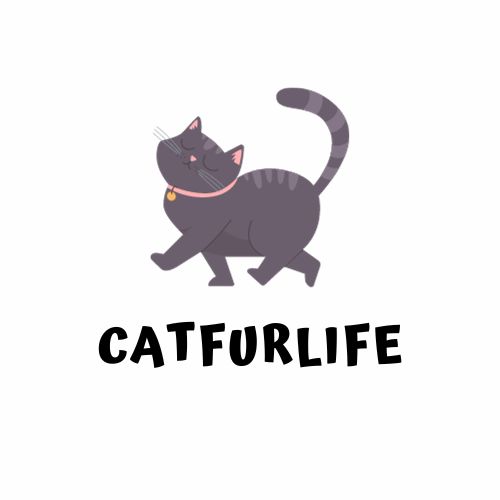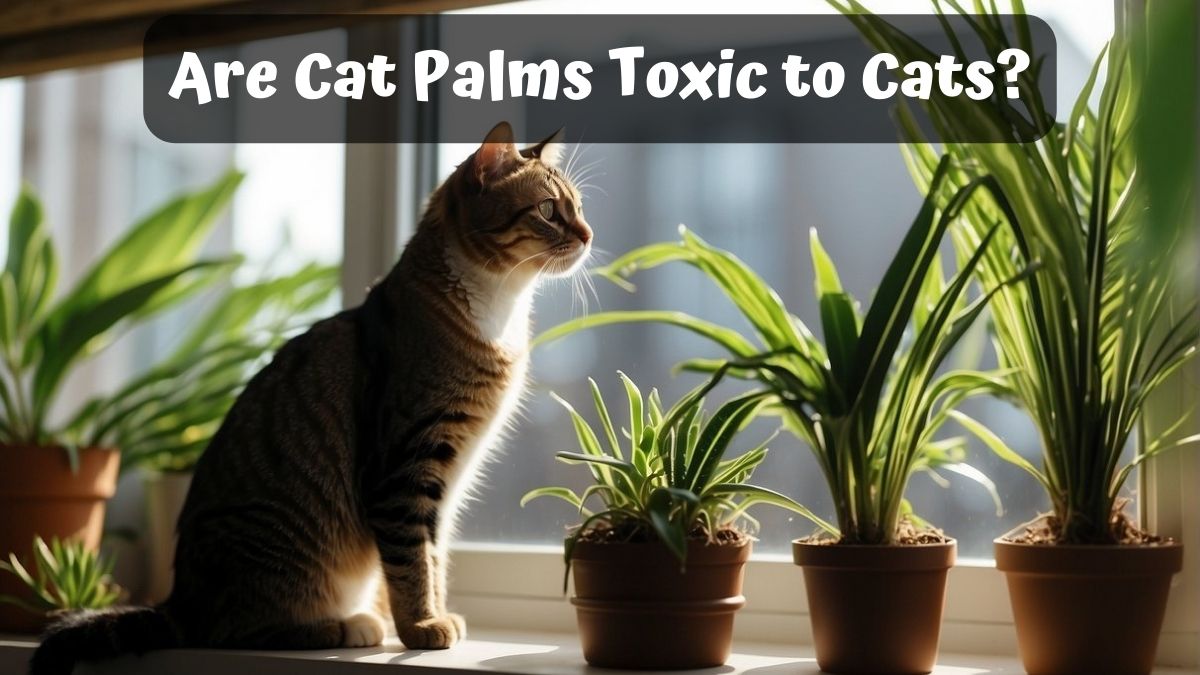Cat owners often seek to enhance their living spaces with greenery, but the potential toxicity of certain plants to their feline companions has raised concerns.
Amongst the array of houseplants, the cat palm plant, or Chamaedorea cataractarum, draws particular attention for its lush, pet-safe qualities.
So, are cat palms toxic to cats?
No cat palms are not toxic to cats.
In this article, we will dive deeper into how the cat palm is safe for your cat and how you can take care of your cat palm plant if you have cats.
Are Cat Palms Toxic to Cats?
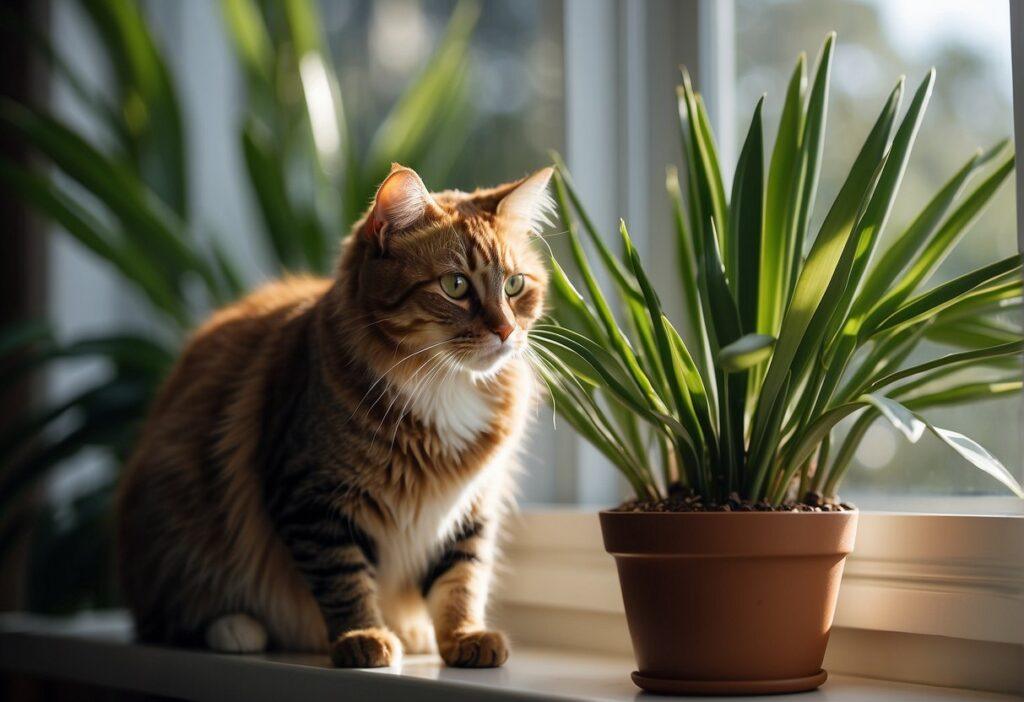
Unlike some indoor palms, such as the sago palm and the cardboard palm, which contain toxins harmful to cats, the cat palm is non-toxic and offers a safe option for households with pets.
This sets it apart from other popular but potentially dangerous indoor palms like the areca palm, majesty palm, and ponytail palm, which need to be researched thoroughly by cat owners before considering them for indoor use.
Yet, not all palms are a cause for concern. Similar to the cat palm, the parlor palm and bamboo palms are considered non-toxic to cats.
This is a relief to pet owners who desire the aesthetic of palm plants without worrying about endangering their cats.
In addition to these cat-friendly palms, other plants such as the spider, Boston fern, money tree, and moth orchid offer peace of mind, being widely recognized as non-toxic to cats.
However, cat owners must remain vigilant as the names of plants can be misleading; for instance, the ponytail palm is not a true palm, and while it is non-toxic, it cannot be treated the same as other palms in terms of care and potential risks to pets.
Responsible pet owners must be informed about the plants they bring into their homes. A plant posing no threat to cats enhances the environment for both the owner and the pet, creating a shared space that is both beautiful and safe.
While the cat palm represents a harmonious choice for cat-occupied households, it always serves well to consult with a veterinarian about the safety of specific plants, especially when introducing a new green companion into a home shared with pets.
What Is Cat Palm?
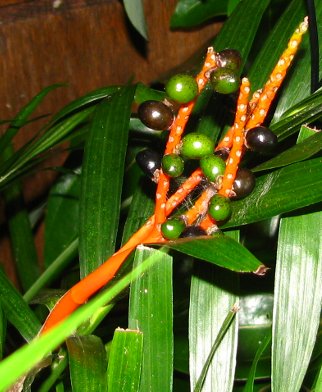
Cat Palm, scientifically known as Chamaedorea cataractarum, is a type of palm that is often kept as an indoor plant.
Originating from the humid forests of Southeastern Mexico and Central America, it thrives in similar warm, shaded indoor environments.
The plant is also called the Cataract Palm or Cascade Palm due to its graceful, cascading leaves.
This palm-like plant’s popularity as a houseplant stems from its lush, green foliage and minimal care requirements, making it an ideal botanical addition for home and office spaces.
It is characterized by its clustered, slender stems and dark green leaves that arch elegantly downwards.
While several palm species can potentially harm pets, the Cat Palm is generally considered non-toxic. This is particularly important for owners of a curious cat or other pets that may nibble on plants.
However, pet owners should always be vigilant and ensure that their pets do not ingest plants.
Given its non-toxic nature, the Cat Palm is favored among plant enthusiasts who own pets. Its ability to coexist safely within a pet-inclusive household contributes to its status as a popular houseplant among cat owners.
Is Cat Palm Safe for Cats?
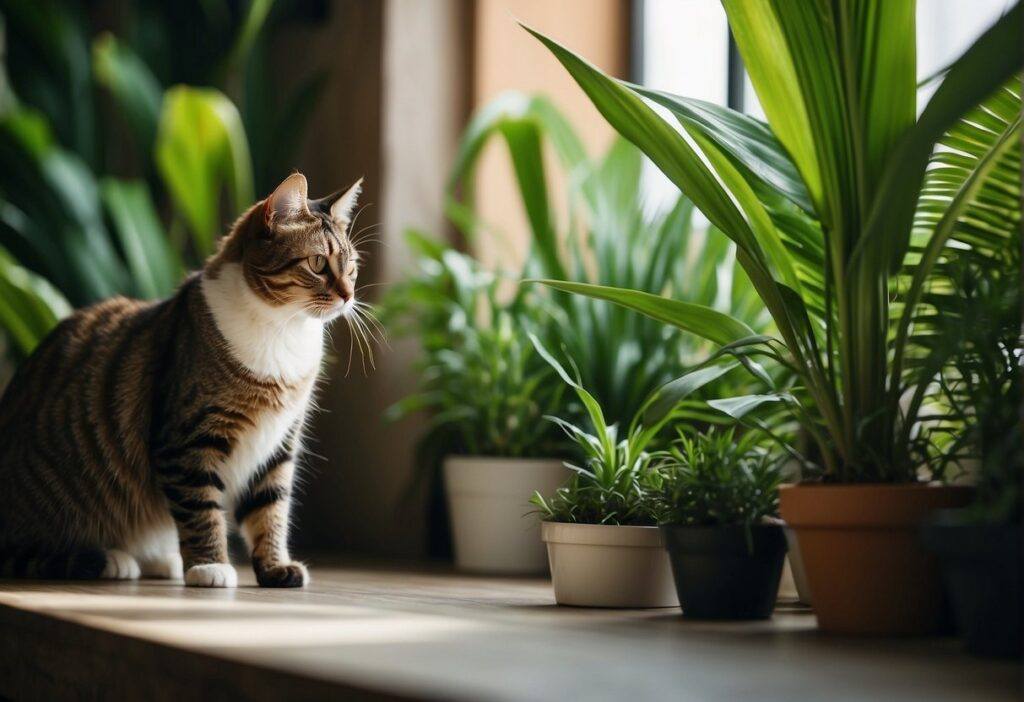
Cat Palms, known scientifically as Chamaedorea cataractarum, are often chosen by cat owners seeking to create a pet-safe living environment.
These palms fall under the category of non-toxic plants, providing a green and lush backdrop in homes without threatening furry friends.
The American Society for the Prevention of Cruelty to Animals (ASPCA) confirms that Cat Palms are safe for felines.
The Pet Poison Helpline, an organization dedicated to preventing pet poisoning, also supports this claim.
As such, Cat Palms can be included in a list of pet-safe plants, allowing pet owners to decorate their homes without fear of endangering their feline friends.
It’s worth noting that while the entire plant is considered non-toxic, it’s still advisable for pet owners to deter cats from chewing on palm leaves.
Physical contact with the fronds is not harmful; however, ingesting significant amounts might lead to mild gastrointestinal upset purely due to the roughage.
Like true palms, cat palms have fibrous palm fronds, which can be harsh on a cat’s digestive system.
Here is a quick reference for cat owners regarding the safety of Cat Palm:
- Plant Name: Cat Palm (Chamaedorea cataractarum)
- Toxicity: Non-toxic to cats
- Safe Parts of the Plant: All parts
- Risks: None toxicologically; potential mild digestive upset if large amounts are ingested
- Recommendation: Provide supervision to ensure minimal ingestion of palm fronds
In creating a safe environment for cats, it’s comforting to know that plants like the Cat Palm are suitable companions for your home ecosystem, contributing to the aesthetics without compromising the health of your feline friends.
Related: 25 Signs Your Cat Loves You
Caring for Your Cat Palm
Cat palms, known for their lush and tropical appearance, thrive in environments that mimic their natural habitat.
They are an ideal choice for indoor environments due to their low maintenance requirements.
Light: Place your cat palm in an area that receives bright indirect light. Although they can adapt to lower light conditions, too much direct sunlight can scorch the leaves.
Humidity: Cat palms flourish in high humidity. Maintaining a humid atmosphere is beneficial, which can be achieved by misting the leaves or using a humidifier.
Watering: Use lukewarm tap or rainwater to keep the soil moist but not waterlogged. Letting the top inch of the soil dry out is a good idea before watering again.
Pests: Keep an eye out for common pests such as spider mites. Regular inspections of the fronds will allow for early detection and treatment. Neem oil can be an effective natural remedy for these pests.
Location: Cat palms are adaptable and appreciate a balance, thriving in partial shade. Be mindful to avoid exposure to full sun for extended periods.
Soil: Providing well-draining soil will help prevent root rot and maintain overall plant health.
By adhering to these care guidelines, cat palms will remain beautiful plants that complement any indoor space with their tropical charm.
Related: Cat Litter vs. Pellets
Common Issues and Resolutions
Regarding cat palms, pet parents and plant enthusiasts must be aware of potential concerns. These non-toxic indoor plants offer an appealing aesthetic, yet issues may arise affecting both the plant’s health and the feline’s well-being.
- Brown Leaf Tips: This issue often indicates low humidity. Consider using a pebble tray with water or a humidifier to increase the ambient moisture.
Slow Growth:
- Ensure the plant receives adequate indirect light.
- Fertilize during the growing season for optimal health.
- Keep the soil consistently moist without oversaturation.
Upset Stomach in Cats:
- While cat palms are not toxic, ingestion can still cause mild stomach upset in sensitive cats. Deter felines from nibbling with safe, bitter-tasting sprays.
Skin Irritation:
| Condition | Resolution |
|---|---|
| Contact with plant sap | Rinse affected skin with water |
| Allergic reactions | Consult with a veterinarian for allergic pets |
Fungal Diseases:
- Maintain proper air circulation.
- Avoid overwatering to prevent root rot and fungal growth.
New plant owners should be diligent about providing the right conditions for cat palms to thrive while being conscientious of a cat’s health and curiosity.
Pet parents can seek immediate veterinary care by recognizing signs like liver damage or severe allergic reactions—which are rare due to the non-toxic nature of cat palms. Remaining informed and proactive ensures a safe and harmonious environment for all.
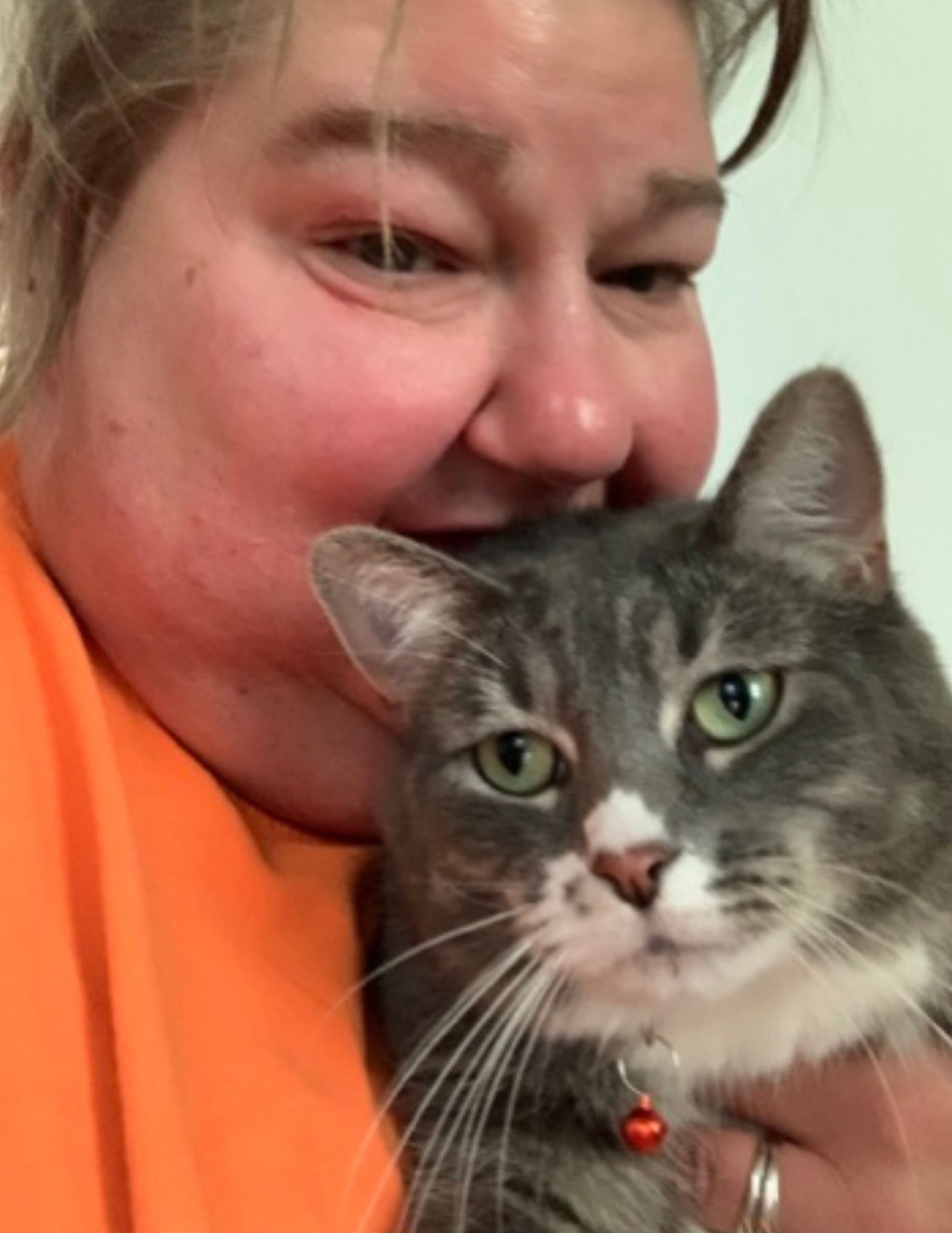
Meet Ann Haasnoot, the passionate founder of CatFurLife.com. A lifelong cat lover from Wisconsin, Ann combines her extensive feline behavior and care knowledge with her love for writing. On her website, she shares invaluable insights about cat breeds, care tips, and her experiences with her beloved furbaby, aiming to deepen the bond between cats and their human companions.
